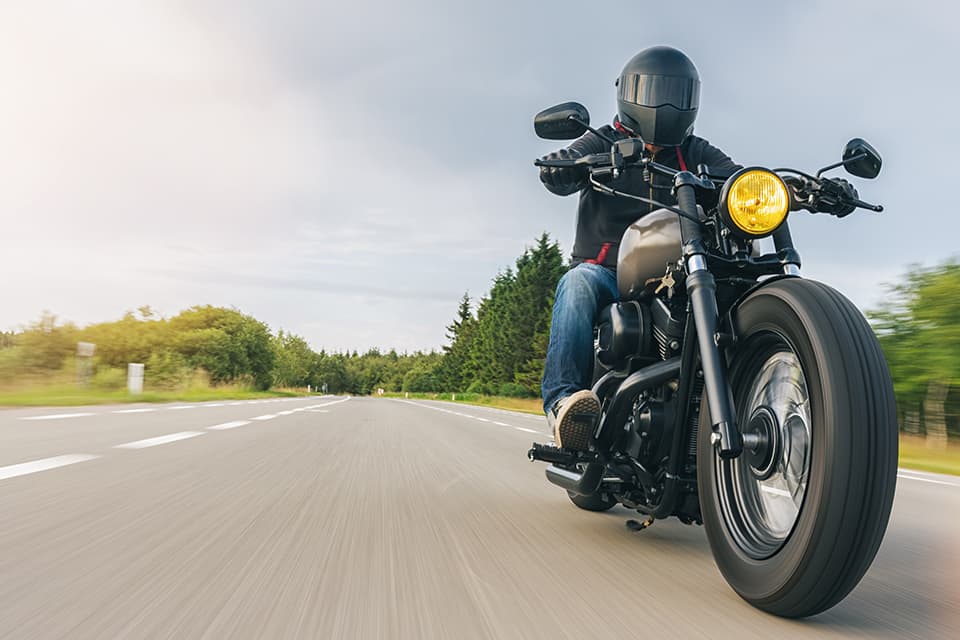BS4 Vs. BS6: Key Difference Between BSIV and BSVI Engine
Air pollution has become one of the major concerns in India. As per IQAir report of 2024, six out of the nine most polluted global cities were in India. To combat air pollution levels, BS4 and BS6 engines were introduced. For a novice person, understanding the difference between BS4 and BS6 engines can be a tough nut to crack. While both are types of engines, the only difference lies in their fuel type and emission values. Read the following article to learn about the BS4 vs BS6 engines and their major differences.
-
Save up to 85%# by comparing plans
-
17+ Insurers to choose from
-
1.2 Crore+ Bike Insured

Plans starting ₹1.3/day*
How is BS6 Different from BS4?
Bharat Stage Emissions Norms (BS) is the organization that regulates the emission for vehicles in India. The BS4 and BS6 engines were introduced to reduce vehicle emissions, pollution levels, and save the environment.
BS6 engine is a major step taken by the Indian Ministry of Road Transport and Highway (MoRTH) to improve the air quality and reduce emissions. In comparison to the BS4 engines, BS6 engines adhere to stricter norms that help in lower levels of pollutants like nitrogen oxide (NOx), particulate matter (PM), and other harmful gasses. The government mandated that all bikes registered and sold after 1 April 2020 follow the BS6 compliant. Once you purchase a new bike, it will typically be running on a BS6 engine. You must also ensure to buy a bike insurance policy when you finally get your bike.
BS6 emission norms are stricter than the BS4 criteria and help to reduce NOx emissions by 70% in diesel two wheelers and by 25% for petrol engines. Thus a BS6 engine emits five times lower sulphur traces than a BS4 engine.
Key Differences Between BS4 and BS6 Engine
It is quite crucial to understand which one is better while comparing the BS4 vs the BS6 engine. The following table highlights the difference between the two in a detailed manner:
| Criteria | BS6 | BS4 |
| Sulphur Content | Releases significantly cleaner and lesser sulphur than BS4 engine. | Higher sulphur components lead to increased emissions and air pollutants. |
| NOx Emission | Lesser or equal to 60 mg/km | 80mg/km |
| Sulphur Concentration | Reduced to 10ppm | 50ppm |
| Lubricating Characteristics | Contains Mimic Sulphur’s lubricating characteristics for better performance. | Only real Sulphur is used, which emits more pollutants. |
| Onboard Diagnostic (OD) | Available in BS6 | Not available in BS4 |
| Real Driving Emission | Driving Emission Standards are strictly enforced in BS6 to track pollutant emissions in real-time situations. | The real-time situation cannot be traced in BS4 engines. |
BS6 vsBS4 Engine Pollution Emission Levels
The B6 engine emits less pollutants as compared to the BS4 engine. The table below depicts the emission levels of both BS6 and BS4 engines.
| Type of Fuel Engine | Pollutant Gases | BS6 Emission Level | BS4 Emission Level |
| Petrol Engine Vehicle | Particulate Matter (PM) | 4.5mg/km | NA |
| Nitrogen Oxide (NOx) | 60mg | 80mg | |
| Diesel Engine Vehicle | Particulate Matter (PM) | 4.5mg/km | 25mg |
| Nitrogen Oxide (NOx) | 80mg | 250mg | |
| Hydrocarbons + Nitrogen Oxide (HC + NOx) | 170mg/km | 300mg |
How Does a BS6 Engine Work?
Given the high pollution levels in India, BS4 norms despite being stringent couldn’t be sufficient. The BS6 norms introduced by MoRTH are expected to reduce NOx, PM levels along with reducing the sulphur traces.
The BS6 norms also claim to reduce NOx levels by 25% in petrol engines and by 68% in diesel engines. It is also anticipated that PM emissions will fall by 80% in diesel vehicles.
In the BS6 engine, the converter assists the Selective Catalytic Reduction (SCR) mechanism present in the Nitrogen Oxide to transform into Diatomic Nitrogen or H2O. In this, the SCR system uses fuel fumes fluid to minimize the NOx levels.
If the exhaust fumes come in contact with AdBlue liquid, the urea is transformed into CO2 or ammonia. The NOx is also transformed into nitrogen and water vapours, which helps minimize the emission.
Why Do We Need a BS6 Bike Engine?
With the advancement in engine technology, BS6 has made significant improvements in every aspect. Under this norm, two-wheeler manufacturers must install gasoline injection systems to reduce toxic exhaust emissions.
As the BS6 bike engines are powerful and more fuel-efficient, they have reduced environmental carbon emissions. Ultimately, this emission norm has improved the overall performance of a two-wheeler.
FAQs
-
Q.1 Which is better BS4 or BS6 engine?
Ans: BS6 is an enhanced fuel type. Due to its improved combustion efficiency and advanced technologies, BS6 emits less pollutants in the air and offers better power output and performance. Hence, the BS6 engine is considered to be a better alternative. -
Q.2 What are the disadvantages of BS6?
Ans: Since BS6 is an enhanced engine type and is available in newer bike models, they can be more expensive as compared to the BS4 and older engine types. Apart from this, BS6 is also costlier to maintain as it requires better quality fuel which affects the running costs. -
Q.3 Is it okay to buy a BS4 bike now?
Ans: You can easily drive a BS4 if you have one. However, as of April 1, 2020, the government of India mandated all manufacturers to build, sell, and register only BS6 (BSVI) vehicles. -
Q.4 How do I know if my bike is BS4 or BS6?
Ans: You can easily check if your bike is running on a BS4 or a BS6 engine using the Vehicle Identification Number (VIN). The 9th and 10th digits of your 17-character VIN denote the month and year of manufacture. After April 2020, all bikes are typically BS6. You can also check the engine type mentioned on your RC.
Two Wheeler insurance articles
^The renewal of insurance policy is subject to our operations not being impacted by a system failure or force majeure event or for reasons beyond our control. Actual time for a transaction may vary subject to additional data requirements and operational processes.
^The buying of Insurance policy is subject to our operations not being impacted by a system failure or force majeure event or for reasons beyond our control. Actual time for transaction may vary subject to additional data requirements and operational processes.
#Savings are based on the comparison between highest and the lowest premium for own damage cover (excluding add-on covers) provided by different insurance companies for the same vehicle with the same IDV and same NCB.
*TP price for less than 75 CC two-wheelers. All savings are provided by insurers as per IRDAI-approved insurance plan. Standard T&C apply.
*Rs 538/- per annum is the price for third party motor insurance for two wheelers of not more than 75cc (non-commercial and non-electric)
#Savings are based on the comparison between the highest and the lowest premium for own damage cover (excluding add-on covers) provided by different insurance companies for the same vehicle with the same IDV and same NCB.
*₹ 1.5 is the Comprehensive premium for a 2015 TVS XL Super 70cc, MH02(Mumbai) RTO with an IDV of ₹5,895 and NCB at 50%.
*Rs 457/- per annum is the price for the third-party motor insurance for private electric two-wheelers of not more than 3KW (non-commercial).The list of insurers mentioned are arranged according to the alphabetical order of the names of insurers respectively.Policybazaar does not endorse, rate or recommend any particular insurer or insurance product offered by any insurer. The list of plans listed here comprise of insurance products offered by all the insurance partners of Policybazaar. For complete list of insurers in India refer to the Insurance Regulatory and Development Authority of India website www.irdai.gov.in





























